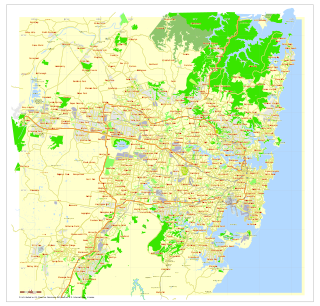Biography
Born in Sydney in 1938, Seber emigrated to New Zealand with his family at the end of World War II. [1] He attended the Auckland University College, graduating with an MSc with first-class honours in 1960, [2] and won a Commonwealth scholarship to undertake PhD in statistics at the University of Manchester. [1] Completing his doctorate in 1963, he took up an assistant lectureship in statistics at the London School of Economics. In 1965 he and George Jolly (statistician) simultaneously published accounts of the capture-recapture model of estimating biological population sizes, that came to be called the Jolly-Seber model. [1] The same year, he returned to the University of Auckland, where he worked until retirement, [3] except for a brief stint from 1971 to 1972 as professor of statistics at the University of Otago. [4]

Sydney is the state capital of New South Wales and the most populous city in Australia and Oceania. Located on Australia's east coast, the metropolis surrounds Port Jackson and extends about 70 km (43.5 mi) on its periphery towards the Blue Mountains to the west, Hawkesbury to the north, the Royal National Park to the south and Macarthur to the south-west. Sydney is made up of 658 suburbs, 40 local government areas and 15 contiguous regions. Residents of the city are known as "Sydneysiders". As of June 2017, Sydney's estimated metropolitan population was 5,230,330 and is home to approximately 65% of the state's population.

World War II, also known as the Second World War, was a global war that lasted from 1939 to 1945. The vast majority of the world's countries—including all the great powers—eventually formed two opposing military alliances: the Allies and the Axis. A state of total war emerged, directly involving more than 100 million people from over 30 countries. The major participants threw their entire economic, industrial, and scientific capabilities behind the war effort, blurring the distinction between civilian and military resources. World War II was the deadliest conflict in human history, marked by 50 to 85 million fatalities, most of whom were civilians in the Soviet Union and China. It included massacres, the genocide of the Holocaust, strategic bombing, premeditated death from starvation and disease, and the only use of nuclear weapons in war.

The University of Auckland is the largest university in New Zealand, located in the country's largest city, Auckland. It is the highest-ranked university in the country, being ranked 85th worldwide in the 2018/19 QS World University Rankings. Established in 1883 as a constituent college of the University of New Zealand, the university is made up of eight faculties; these are spread over six campuses. It has more than 40,000 students, and more than 30,000 "equivalent full-time" students.
Seber was elected a Fellow of the Royal Society of New Zealand in 1997, [5] and in 1999 he was awarded the society's Hector Medal. [6]
Since formally retiring from academic life, Seber gained a Diploma in Counselling and currently works part-time as a counsellor. [7]


